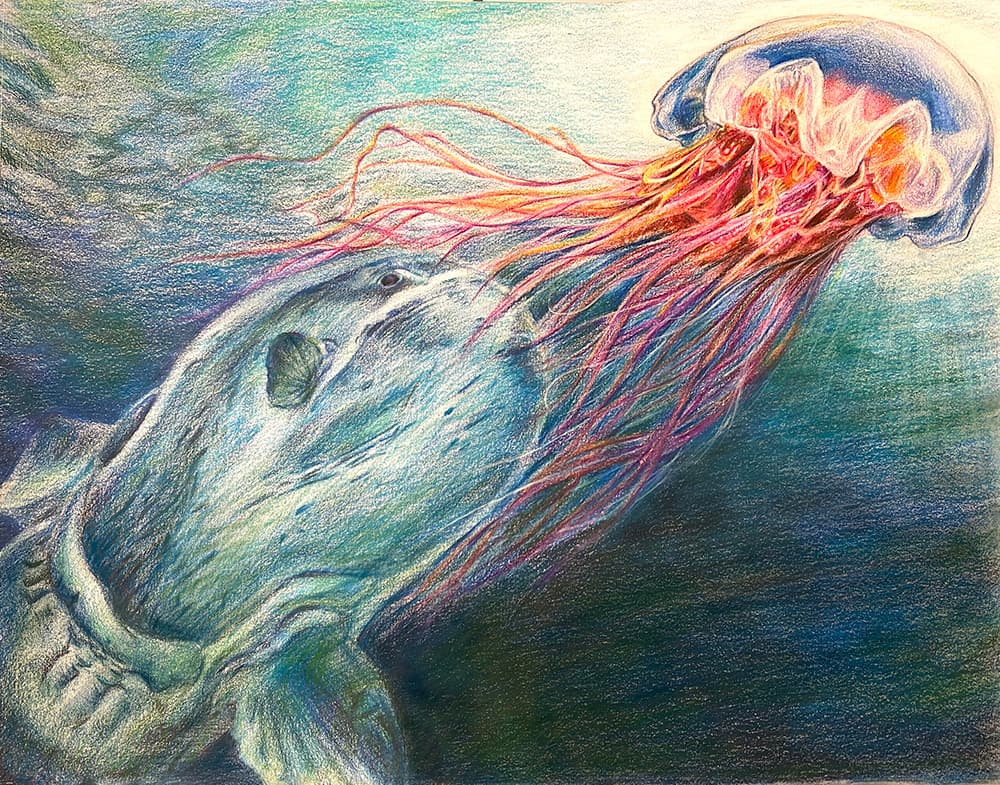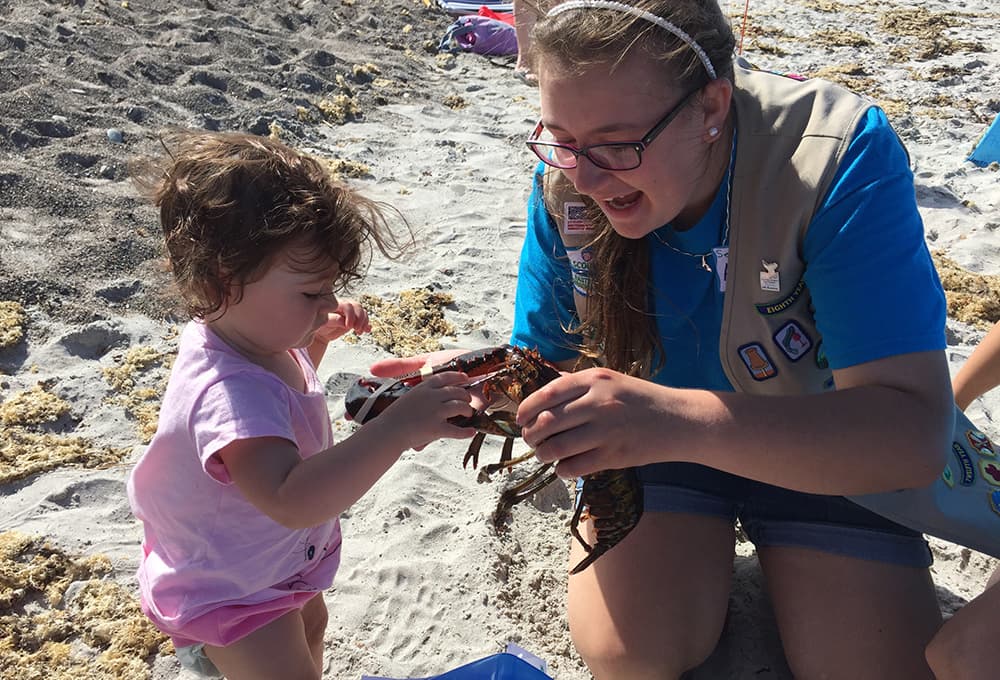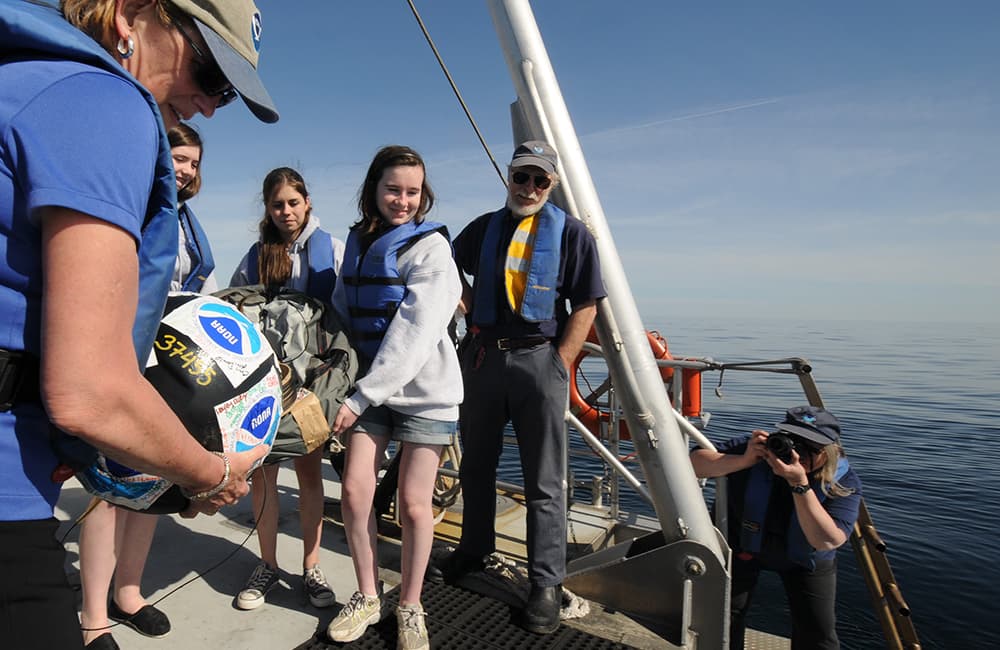For Students

Spark your creativity and sense of wonder with activities that connect you to the ocean! The sanctuary offers learning experiences to expand your horizons through science, technology, engineering, math, and the arts. The sanctuary education program encourages you to be advocates for this special ocean place.
Marine Art Contest
Each year, the sanctuary co-sponsors a marine art contest for K-12 students with the Massachusetts Marine Educators (MME) organization with the theme of "Exploring Marine Biodiversity in Stellwagen Bank National Marine Sanctuary." In 2020 the contest changed to electronic entries. MME member institutions provide prizes for the winners, and all winning art is posted in the marine art gallery. View the most recent contest brochure.
Ambassadors Program

Students, ages 15 and up, are invited to join our volunteer Sanctuary Ambassadors Program, in which they learn about the resources of the sanctuary, teach others about those treasures, and participate in stewardship programs. Visit our volunteer page for more information.
Internships
Although the sanctuary does not offer a formal paid internship program of our own, we host students who have been awarded internships from outside sources at the college and graduate school levels. Unpaid volunteer internships have been supported for high school and college students under the direction of sanctuary staff members in education, outreach, research, facilities operation, and data management roles.
Student Classes and Research

The sanctuary encourages students to participate in afterschool programs that focus on science, technology, engineering, and math, like the annual ROV (remotely operated vehicle) competition, building a drifter, and independent research. The sanctuary participates in science fairs, when possible.
The sanctuary is developing formal partnerships with educational institutions in the region, including Boston University Marine Program (undergraduate marine research course) and the Cohasset Center for Student Coastal Research (high school research – STREAM to Sanctuary: Certificate of Watershed Stewardship).

